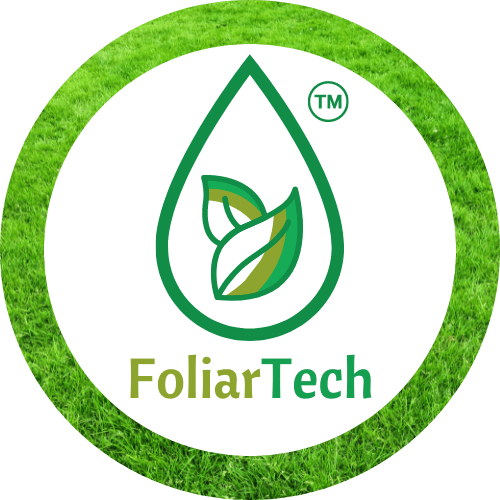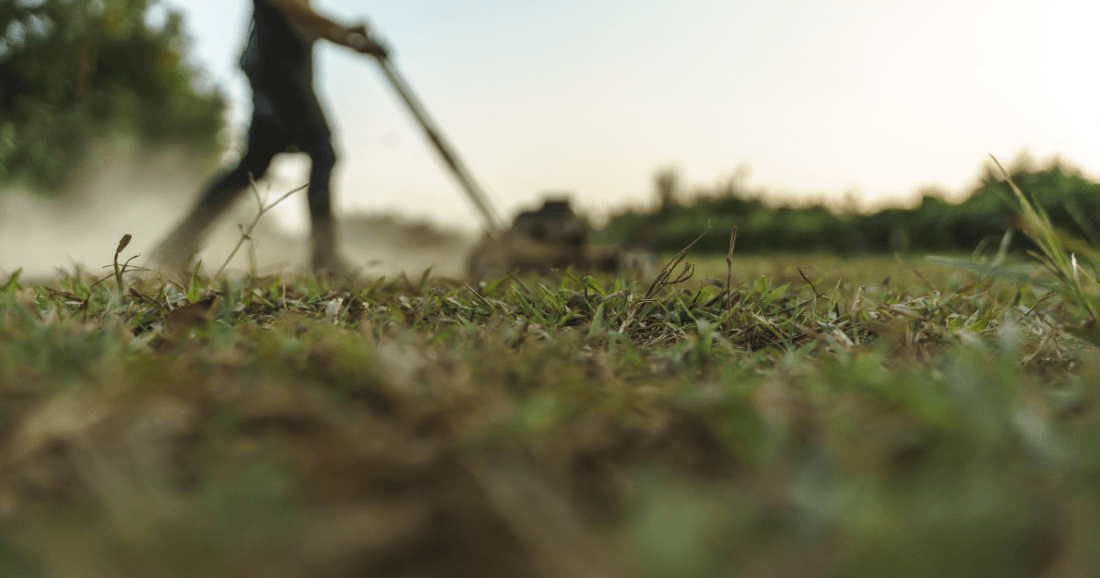As a homeowner, you want to have a lush green lawn that is the envy of your neighborhood. However, sometimes, despite your best efforts, your lawn just doesn't seem to be thriving as it should.
If your lawn is looking lackluster and not growing as it should, it may need lime. Lime can be a crucial component of a healthy lawn, but how do you know if your lawn needs it?
In this article, we will guide you on how to tell if your lawn needs lime and how to apply it properly.

What is Lime, and Why is it Important?
Lime is a soil amendment that is used to increase the pH level of acidic soil. Soil pH is the measure of acidity or alkalinity on a scale of 1 to 14. A pH of 7 is considered neutral, anything below 7 is acidic, and anything above 7 is alkaline.
Most grasses prefer a slightly acidic soil pH of 6.0 to 7.0. When the pH level drops below this range, your lawn may struggle to absorb nutrients, resulting in a lack of growth and a dull appearance.
Lime is an excellent solution to restore the pH balance of your soil and promote healthy lawn growth.
Types of Lime
There are different types of lime available, and it's essential to know which one is suitable for your lawn or garden.
In this section, we will discuss the four most common types of lime: agricultural lime, dolomitic lime, pelletized lime, and hydrated lime.
Agricultural Lime
Agricultural lime is the most commonly used type of lime. It is also known as garden lime or calcium carbonate. This type of lime is made from pulverized limestone or chalk and is high in calcium content.
Agricultural lime is used to raise the soil pH levels and neutralize the acidity in the soil. It also provides the soil with essential nutrients such as calcium and magnesium, which are necessary for plant growth.
Dolomitic Lime
Dolomitic lime is similar to agricultural lime but has a higher magnesium content. It is made from pulverized dolomite, a type of limestone that contains both calcium and magnesium.
Dolomitic lime is an excellent choice for soils that are low in magnesium, as it provides both magnesium and calcium. This type of lime is ideal for gardens that have a higher need for magnesium, such as those growing vegetables or fruits.
Pelletized Lime
Pelletized lime is another type of agricultural lime that is compressed into small pellets. This type of lime is easier to handle and spread than traditional agricultural lime.
Pelletized lime also releases its nutrients slowly, making it ideal for gardens and lawns that require regular maintenance. It is also less dusty than traditional agricultural lime, making it a more convenient option for indoor plants.
Hydrated Lime
Hydrated lime, also known as slaked lime, is a type of lime that is made by adding water to quick lime. It is highly reactive and raises the soil pH levels quickly.
Hydrated lime is often used in industrial settings, such as in the treatment of wastewater. However, it is not recommended for use in the garden or lawn, as it can burn plants if not used correctly.

Signs Your Lawn Needs Lime
Soil pH plays a critical role in the growth and health of your lawn. A pH level of 6.0 to 7.0 is ideal for most grass types.
However, if the pH level falls below this range, your grass will struggle to grow, and weeds and moss will take over. Here are some signs that your lawn needs lime:
Soil pH Test
Performing a soil pH test is essential to determine if your lawn needs lime. You can purchase a soil pH test kit at your local garden center or home improvement store. Here's how to perform a soil pH test:
- Choose a representative area of your lawn to test. Avoid areas where you have recently added lime or fertilizer.
- Remove any debris, such as grass clippings, rocks, or sticks, from the soil surface.
- Use a trowel or shovel to dig down about 4-6 inches into the soil.
- Collect a sample of soil and place it into a clean container.
- Follow the instructions on the soil pH test kit to test the pH level of the soil.
If the pH level is below 6.0, your lawn needs lime. If the pH level is between 6.0 and 7.0, your soil pH is ideal. If the pH level is above 7.0, your soil is too alkaline, and you may need to add sulfur to lower the pH level.
Poor Grass Growth
If your lawn is showing signs of poor grass growth, adding lime can help. Lime helps to neutralize soil acidity, allowing grass to absorb the nutrients it needs to grow. Here's how to apply lime to your lawn:
- Determine the amount of lime you need to apply. You can use a soil pH test kit to determine the amount of lime needed.
- Apply lime to your lawn using a spreader. Be sure to follow the instructions on the lime packaging.
- Water your lawn immediately after applying lime to help the lime penetrate the soil.
- Wait a few weeks before testing the soil pH level again to determine if additional lime is needed.
Weeds Taking Over
Weeds can be the bane of any lawn owner's existence. They are unsightly and can quickly take over your lawn, leaving your grass struggling to grow.
If you notice that weeds are becoming more and more prevalent in your lawn, it may be a sign that your soil pH is too low.
Weeds tend to thrive in acidic soil, so if your lawn is too acidic, it will have a field day. While adding lime to your lawn won't completely eliminate weeds, it can help to reduce their growth and make it easier for your grass to compete.
Moss Growth
Moss is a common problem in lawns with low soil pH. If you notice that moss is starting to grow in your lawn, it's a good indication that your soil is too acidic.
Moss prefers acidic soil and can quickly take over your lawn, especially in areas with low light or poor drainage.
While moss may not be harmful to your lawn, it can be unsightly and make it difficult for your grass to grow. If you want to get rid of moss, you will need to adjust your soil pH by adding lime to your lawn.
What is agricultural lime?
Agricultural lime is a natural solution used to improve soil quality by increasing its pH level, making it less acidic and more suitable for plant growth.
What is garden lime used for?
Garden lime is used to enhance soil quality in gardens by raising the pH level, which helps promote optimal plant growth.
Can You Use Humic Acid with Lime?
Yes, humic acid and lime can be used together. In fact, they can complement each other to improve soil quality and plant growth. Here are some reasons why:
Mitigate the Negative Effects of Lime
As mentioned earlier, adding too much lime to soil can make it too alkaline, which can be harmful to plant growth.
However, when used together with humic acid, the negative effects of lime can be mitigated. Humic acid helps to buffer the soil's pH, which can prevent the soil from becoming too alkaline.
Improve the Effectiveness of Lime
When used alone, lime can take a long time to break down and become available to plants. However, when used together with humic acid, the effectiveness of lime can be improved.
Humic acid helps to break down lime more quickly, which can make it more available to plants.
Enhance the Nutrient Availability of Lime
Humic acid contains a range of nutrients that are beneficial for plant growth, including nitrogen, phosphorus, and potassium. When used together with lime, humic acid can enhance the nutrient availability of lime, making it more effective at improving plant growth.

Humic Elite PG™ - Recommended Liquid Humic Acid
Humic Elite PG™ is a liquid humic acid solution that is a recommended product for improving soil quality and increasing plant growth.
This premium formula is made from 100% pure Humalite from Alberta, Canada, and is OMRI-certified organic, making it a safe and effective choice for gardeners, farmers, and other horticulturalists.
One of the benefits of using Humic Elite PG™ is that it enhances fertilizer performance, allowing you to spend up to 30% less on fertilizer. This is because humic acid helps to maximize nutrient uptake by plants, making the nutrients more available and effective.
When used in combination with lime, humic acid can also help to regulate soil pH levels and eliminate nutrient lockout, which can lead to better plant growth and health.
Humic Elite PG™ also improves soil health by creating microbial activity and loosening compacted soil, allowing for more oxygen to reach the root zone. This can result in fewer weeds and pests and more resiliency to environmental stress.
Additionally, the rapid foliar absorption of the liquid formula leads to immediate effects, allowing you to see deep green results and boosted chlorophyll output.

Conclusion
Keeping your lawn healthy and vibrant requires paying attention to the soil's pH levels. If you notice yellowing grass, moss growth, or acidic soil, it might be time to apply lime.
By testing your soil and following the recommended application rates, you can ensure your lawn has the right balance of nutrients for optimal growth and beauty.
Agricultural lime and garden lime are both essential for maintaining a thriving garden. Discover the benefits of these natural solutions in improving soil quality and promoting optimal plant growth for all gardening enthusiasts.
Don't forget to water thoroughly after applying lime to help activate its benefits.

